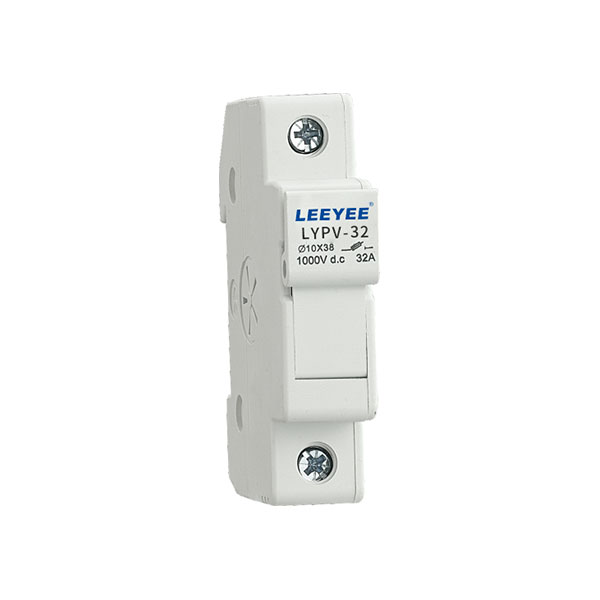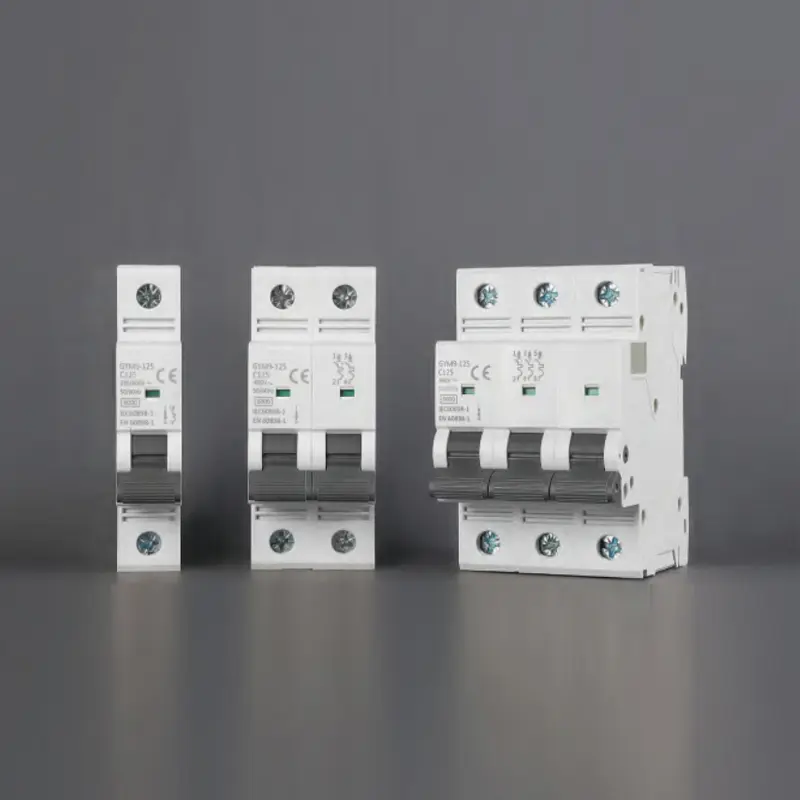Table of Contents
Introduction
In modern electrical systems, Surge Protective Devices (SPDs) play a crucial role in protecting equipment from surges and transient overvoltage, preventing damage and fire hazards. However, merely installing an SPD is not sufficient; selecting the appropriate fuse or Miniature Circuit Breaker (MCB) is equally important. This article will provide you with detailed guidance on how to select the right fuse or MCB based on various factors, ensuring effective protection in conjunction with an SPD.
Basic Concepts
1. Fuse
A fuse is an electrical protection device that interrupts the circuit when the current exceeds its rated value. Fuses come in various types, including glass tube fuses, ceramic fuses, fast-acting fuses, and delayed fuses. Each type has different characteristics, suitable for various applications.
2. Miniature Circuit Breaker (MCB)
An MCB is an automatic electrical protection device that disconnects the circuit when overload or short circuit is detected. The advantage of MCBs lies in their reset capability; once the fault is cleared, the circuit can be easily restored without needing to replace a fuse.
Considerations for Choosing Fuses or MCBs
When selecting a fuse or MCB, several key factors need to be considered:
1. Rated Current
The first step in choosing a fuse or MCB is to determine its rated current. The rated current should match the SPD’s rated current to ensure that it does not trip under normal operating conditions. Typically, the rated current should be slightly higher than the equipment’s normal operating current to avoid nuisance tripping during startup.
2. Voltage Rating
The voltage rating of the fuse or MCB must exceed the operating voltage of the circuit. Ensure that the selected device’s voltage rating meets the electrical system’s requirements to prevent equipment failure due to voltage mismatch.
3. Short-Circuit Protection Capacity
Short-circuit protection capacity refers to the maximum current that a fuse or MCB can withstand during a short circuit. Selecting a fuse or MCB with sufficient short-circuit protection capacity ensures that the circuit can be promptly interrupted in the event of a short circuit, reducing the risk of equipment damage and fire hazards.
4. Response Time
The response time of fuses and MCBs is another important factor. Fuses generally have a fast response time, but this can vary based on the fuse material and design. MCBs typically have a quicker response time, making them suitable for sensitive equipment. Selecting an appropriate response time based on the equipment’s needs can enhance protection effectiveness.
5. Type Selection
Choose the appropriate type of fuse or MCB based on specific applications. For sensitive equipment, a fast-acting fuse is usually preferred, while delayed fuses or MCBs are better for inductive loads like motors. Selecting the right protection device based on load type can effectively reduce the risk of nuisance tripping.
Characteristics of Surge Protective Devices
1. Types of SPD
SPDs are categorized into different types based on their characteristics, mainly Type 1, Type 2, and Type 3:
- Type 1 SPDs are usually installed at the service entrance of buildings and can withstand large-scale lightning surges.
- Type 2 SPDs are suitable for electrical distribution systems, providing secondary protection.
- Type 3 SPDs are typically used for equipment-level protection, such as for electronic and communication devices.
2. Rated Current and Voltage of SPD
When selecting a fuse or MCB, the rated current and voltage of the SPD can also influence the decision. Ensure that the chosen fuse or MCB parameters match those of the SPD to maintain overall compatibility and safety in the system.
Differences in Combined Use
1. Characteristics of Using Fuses
- One-Time Protection: Fuses must be replaced after they blow, making maintenance necessary. When used with SPDs, fuses may be damaged during SPD operation, especially during lightning strikes, leading to the inability to protect the circuit afterward.
- Response Time: While fuses generally respond quickly, they may be susceptible to nuisance tripping or damage under transient overvoltage conditions. Careful selection of fuse specifications is necessary to ensure they can withstand transient surge currents.
- Selection and Configuration: Typically, a delayed fuse with a rated value slightly above the operational current is selected to avoid nuisance tripping during SPD operation.
2. Characteristics of Using MCBs
- Reset Capability: MCBs can be manually reset after tripping, allowing for easy restoration of the circuit even after SPD operation. This convenience makes MCBs preferable in systems that require frequent protection and restoration.
- Sensitivity and Protection Characteristics: The type of MCB (B-type, C-type, D-type) can be selected based on load characteristics, providing better adaptation to the starting characteristics of inductive loads like motors. Choosing the right type enhances cooperative protection with SPDs.
- Short-Circuit Protection Capacity: MCBs typically have higher short-circuit protection capacities, allowing for quicker circuit disconnection during transient overvoltage or short-circuit situations, thus reducing potential damage to equipment.
Installation Location and Configuration
1. Fuses
Fuses are generally installed at the output of SPDs to protect downstream equipment. The design must ensure that the fuse’s rated value can withstand short bursts of surge current and consider the replacement needs after a fault occurs.
2. MCBs
MCBs can also be installed at the SPD’s output. Due to their reset capability, MCBs significantly reduce fault recovery times, making them suitable for electrical systems requiring frequent protection. When selecting MCBs, consider their collaborative operation with SPDs to ensure their parameters meet system requirements.
Safety and Maintenance
1. Fuses
Since fuses need to be replaced after blowing, periodic maintenance and inspection are necessary. Ensure there are enough spare parts for quick replacements, especially in high lightning-risk areas.
2. MCBs
The design of MCBs provides greater safety and convenience in protection and restoration. Regularly check the operational status and tripping conditions of MCBs to promptly identify potential faults and ensure the safe operation of the system.
Economic Considerations
- Fuses: Initial costs are lower, but frequent replacements can lead to higher long-term maintenance costs, particularly in areas prone to surge events.
- MCBs: Although the initial costs are relatively higher, their reset capability and lower maintenance frequency make them more economical in the long run. Therefore, in applications with frequent protection needs, MCBs may be the better choice.
Example Combination
Suppose you have an AC electrical system rated at 400V with a load of 25A. The SPD you choose has an Imax of 40kA. Here’s a specific combination:
- SPD: AC Surge Protective Device, Imax 40kA, rated voltage 400V.
- Fuse: 32A, delayed fuse, short-circuit breaking capacity 10kA.
- MCB: 32A, B-type, short-circuit breaking capacity 10kA.
Installation and Configuration
1. Installation Recommendations
When installing fuses or MCBs, always follow the manufacturer’s instructions. Ensure they are installed in accessible locations for operation and inspection, and avoid damp and high-temperature environments to extend the device’s lifespan.
2. Configuration Recommendations
Proper configuration of fuses or MCBs is crucial for protecting electrical systems. It is advisable to place the fuse or MCB in the same distribution cabinet as the SPD, ensuring they can work in tandem. Additionally, proper wiring and selecting the appropriate wire cross-section will also impact the performance of protective devices.
Maintenance and Troubleshooting
1. Maintenance Recommendations
Regularly inspect and maintain fuses and MCBs to ensure their proper functioning. Check the fuses for signs of blowing and verify the MCBs for tripping occurrences. For frequent blowing or tripping, promptly investigate the root causes.
2. Common Troubleshooting Issues
Common fault issues include frequent blowing of fuses or tripping of MCBs. For fuses that blow frequently, it may indicate circuit overload or short circuits, necessitating an examination of load conditions. For MCBs that trip frequently, it may suggest circuit or equipment faults that require careful inspection of circuit integrity.
Conclusion and Recommendations
Choosing the right fuse or Miniature Circuit Breaker (MCB) is vital for ensuring the effectiveness of Surge Protective Devices (SPDs). By focusing on key factors such as rated current, voltage, short-circuit protection capacity, response time, and type selection, you can provide optimal protection for your electrical system. During installation and maintenance, proper configuration and regular checks will further enhance the safety and reliability of the system.
It is advisable to consult with professionals when selecting and installing fuses or MCBs to ensure compatibility and proper operation of all devices, maximizing the safety of electrical systems and equipment.
If you have any questions or need further assistance, please feel free to contact us!
References and Further Reading
- IEC 61643-1: 2011 – Standard for Surge Protective Devices for Low-Voltage Electrical Installations.
- NEC (National Electrical Code) – United States National Electrical Code.
- Relevant electrical engineering manuals and guides.


